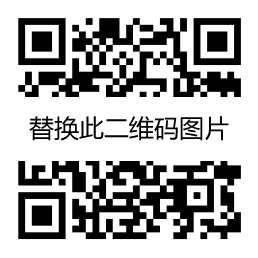教学目标
知识目标
通过本单元的学习,学生能够谈论有关交通工具情况,围绕how do you come to school? by bike/by car/ by bus...等句型。
交际用语学习
how do you come to school? by bike/by car/ by bus...
语法学习
一般现在时用来表示经常的或者习惯性的动作,常与often,usually,sometimes等副词连用。
语音
掌握连读。
掌握句子重音和语调的训练。
能力目标
1.要求学生能熟练的运用表达使用不同的交通工具的句型、掌握与之相关的短语。
2. 复习巩固以How开头的特殊疑问句的用法。进一步理解,熟悉,运用一般现在时。
情感目标
本单元的核心教学项目是“交通工具”,即用英语询问某个人物上学或上班或其他活动的时候所采用的交通工具的语言。教育学生询问他人的时候用句型how do you come to school要求学生掌握好助动词do在不同人称特别是第三人称单数后的变化。通过学习本单元内容使学生了解人乘坐不同的交通工具的表达方式。
教学建议
教学内容分析
本单元的核心内容是“运用某种交通工具去某地的表达法”。在口语训练方面,主要是练by bike/bus/car/train/ship/plane及其问答。如:How do you usually go there/…? I usually go there on foot/by bike/…How many students go there on foot/by bus/…?等。对于第 110课第1部分两位老师的对话,我们可带着Is it a nice day?How does Mr. Wu usually come to school?What is wrong with his bike?这样的问题,先听后读再说,去学习对话。语法方面主
要是进一步复习、巩固一般现在时态和走冠词的某些用法。
听说训练
本单元带情景的对话始于第110课第一部分,尽管只有三段简单对答,其中却包含本单元的教学要点。如果第109课的词汇和句型练习进行得顺利的话,可将这部分移至第一节课中操练。教师可先借助课本中的六幅图,将by的用法教给学生。做法是:先造单句,然后再导入对话。教师设立几个典型场景,请学生回答,如:在一般城镇中Students usually come to school by bike/by bus/on foot.其中有些学生可能是by car/taxi; 在水乡生活的学生多半是by boat;而山区的孩子们可能是on foot;而牧区的学生也许是on horse,那么什么情况是by train可让学生自己思考;他们也许还有许多其它选择,如motorcycle(摩托车),minibus(小公共),electric bike(电动自行车),subway(地铁),coach(长途公共汽车),steamer(汽船)等。
综合前两课对话和听力内容,提供典型场景下的对话。
LI LEI: Hi, Yang Lan. Look at the sun. It's a fine day for a walk, isn't it?
YANG LAN: Yes. That's right. You came by bike today. Don't you usually come to school on foot?
LI LEI: Yes, I do. I like walking. But not today.
YANG LAN: Why not?
LI LEI: I got up late today. I didn't want to be late for school so I came by bike today.
YANG LAN: Oh, I see.
本单元对话训练的结果应使学生就‘“交通工具”这一话题,联系生活实际,自编对话,表演出来。本单元课文的听力练习安排在第 110课第三部分;练习册第 110课练习 2也是个听力练习。它们应与对话训练密切配合,达到听说相结合的目的。
语法教学建议
本单元语法要点是在学过一般现在时的其它用法前提下,教学其表示经常或习惯性动作的用法。经过数次多种形式的训练,学生不难掌握这个用法。因为这个语法点已巧妙地融入课文的多项内容中。教师只要适时帮助学生归纳其用法,如通过问答练习,让学生相互问答有关自己及家人的日常作息活动,就可进一步理解和掌握其用法。
Some ideas for extra practice or enrichment
1 Use the picture that you have brought several times to your lessons. Give a picture to each pair. They should discuss the picture in as much detail as possible. By using pictures, students can become more comfortable with just speaking. As the students are describing the pictures, make sure they don't write down the description. Some students feel they need to write what they are going to say before they say it. However, this is a bad habit, and will actually hinder their language learning. Encourage the students just to speak. As they are talking wander around the room and give help as necessary.
运用你上课时用过的图片,给每组学生一张,让学生尽可能详细地讨论图片。学生描述图片时,一定不要写下描述的内容。一些学生觉得在用英语说前需要把他们想说的先写下来,这是说英语的坏习惯,不利于你的语言学习。要鼓励学生只说英语,必要时教师可以给予提示。
2 Have the students design their own kind of transportation and name it. They should give the purpose of their vehicle. Maybe they want to design something that takes them to the moon, the sun, or just around the block. Encourage them to be as creative as possible. You may need tohelp them with some of the names of parts of vehicles like tyres, windshield, etc.
让学生自已设计他们自己的交通工具,并给它取名,学生必须说明这种交通工具的用途。或许他们想设计一些能把他们带上月球、太阳或只是街道四周。鼓励学生尽可能有创造性,教师可以帮助学生给他们的交通工具取名,像轮胎、挡风玻璃等。
阅读教学建议
本单元第112课第三部分是一篇供选用的短文。练习册第111、112课中也有两三段短文。在阅读训练中,教师可利用课文后的问题让学生进行锻炼。如能以课文线索为背景,画简笔连环画,帮助学生理解和复述课文,效果会更好。练习册第112课练习 6就是这种教法的一个示例。
词语辨析
1.over the river和on the rive
over the river指“在河的上空(或上方)”,on the river指“在河面上”。over和on都是介词,over是“在……上方”的意思,on是“在……上面”的意思,前者指两物体不接触,后者指两物体相接触。如:
There’s a light over the table.
桌子上方有一个灯。(light与table不接触)
There’s a bridge over the river.
河上有座桥。(bridge和river不接触)
How many boats are there on the river?
河面上有多少只船?(boats和river接触)
The kite flies over the house.
风筝飞在屋子上空。(kite和house不接触)
There’s a tall building on the mountain.
山上有座高楼。(building和mountain接触)
over可表示从一边到另一边越过某一物体,两者可以接触,也可以不接触,on可指在某一物体上面移动。试比较:
The plane flies over the mountain.
飞机飞过那座山。(飞机和山不接触)
The red car runs over the bridge.
那辆红色汽车驶过大桥。(汽车与桥接触)
The car runs fast on the road.汽车在路上飞驰。
2.too much 和 too many
too much和too many都作“太多”解,too much修饰不可数名词。而too man修饰可数名词。这里副词too是“太”,“过分”的意思,加强 much或many的程度。如:
You can’t have too much food at a time, or you II feel bad.
你一次不能吃太多的东西,要不然你会感到不舒服的。
There are too many people in that room. I can’t get in.
那个房间里的人太多,我简直进不去。
【注意】有时too much可单独使用,与介词短语for sb.连用,意思是“某人经受不住……”,而too many则不能这样用。如:
This problem is too much for a boy like him.
这一问题对于一个像他这样的孩子太难了。
The trip is too much for my grandfather.
我爷爷经受不住这次旅行。
【注意】too much还可以作宾语或状语用,而too many只能作宾语,不能作状语。如:
You can't eat too much at a time.你一次不能吃得太多。
He talks too much.他说得太多。
usually,often和sometimes的用法
这三个副词是表示行为或动作的频率的。在使用这些词时,要注意它们在句中的位置,请看下面的几个句子:
My mother usually goes shopping on Sundays.
(usually放在行为动词go之前)
I’m often late for school.(often放在 be动词之后)
Sometimes I go to the park with my parents.
(sometimes放在句首)
Se sometimes goes to school on foot.
(sometimes放在行为动词之前)
But I walk sometimes.(sometimes放在句尾)
重难点分析
本单元教学的重点是通过图画和对人们日常出行方式的描述,教会学生出行方式的英语表达方法。
难点仍是一般
声明:有的资源均来自网络转载,版权归原作者所有,如有侵犯到您的权益 请联系邮箱:yuname@163.com 我们将配合处理!
原文地址:How do you come to school?发布于2021-10-22

